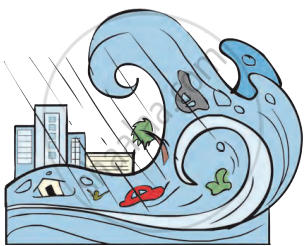Topics
The Living World: Adaptations and Classification
- Biodiversity
- Adaptations and Its Types
- Adaptations of Plants
- Adaptation in Aquatic Plants (Hydrophytes)
- Adaptation in Desert Plants (Xerophytes)
- Adaptation in plants of snowy regions
- Adaptation in Forest Plants
- Adaptation in Grassland Plants (Mesophytes)
- Adaptation for Ingestion of Food in Plants
- Adaptation in Animals
- Adaptation in Aquatic Animals
- Adaptation in Forest and Grassland Animals
- Adaptation in Desert Animals
- Adaptation in animals of snowy regions
- Adaptation in Aerial Animals
- Adaptation in Reptiles
- Adaptation for Food in Animals
- Adaptation for Blending with the Surroundings
- Classification of Living Organisms
- Taxonomic Hierarchy of Living Organisms: Unit of Classification
- Nomenclature
Plants: Structure and Function
Properties of Natural Resources
Nutrition in Living Organisms
- Nutrients and Nutrition
- Autotrophic Plants
- Symbiotic Plants
- Heterotrophic Plants
- Insectivorous Plants
- Saprophytic Plants
- Role of nutrients and effects of their deficiency on plants
- Transport System in Plants
- Nitrogen Fixation
- Nutrition in Animals
- Mode of Nutrition in Animals
- Holozoic Nutrition
- Saprozoic Nutrition
- Parasitic Nutrition
Food Safety
Measurement of Physical Quantities
Motion, Force and Work
Static Electricity
Heat
Disaster Management
Cell Structure and Micro-organisms
- Cell: Structural and Functional Unit of Life
- Measurement and observation of cells
- Plant Cell and Animal Cell
- Structure of the Cell
- Cell Wall - “Supporter and Protector”
- Plasma Membrane
- Cytoplasm - “Area of Movement”
- Nucleus - “Brain” of the Cell
- Endoplasmic Reticulum (ER)
- Golgi Apparatus - "The delivery system of the cell"
- Lysosome - “Suicidal Bag”
- Mitochondria - “Power House of the Cell”
- Non-living Substances Or Cell Inclusion
- Plastids
- Microorganisms (Microbes) and Microbiology
- Useful micro-organisms
- Harmful Microorganisms
- Pathogens: Disease-producing Micro-organisms
The Muscular System and Digestive System in Human Beings
- Muscular System
- Muscles and Its Types
- Human Digestive System
- The Mouth and Buccal Cavity
- The Teeth and Its Structure
- The Salivary Glands
- The Food Pipe/Oesophagus
- Pharynx/Throat
- The Stomach
- The Small Intestine
- Pancreas
- Liver
- The Large Intestine
- Important Glands of the Digestive System
- Effects of Tobacco, Alcohol, Smoking, on the Digestive System
Changes – Physical and Chemical
- Changes-Physical and Chemical
- Classification of Change: Natural and Man-made Changes
- Classification of Change: Harmful and Useful Changes
- Classification of Change: Slow and Fast Changes
- Classification of Change: Reversible and Irreversible Changes
- Classification of Change: Periodic and Non-periodic Changes
- Classification of Change: Physical Changes
- Classification of Change: Chemical Changes
- Corrosion of Metals
Elements, Compounds and Mixtures
Materials We Use
Natural Resources
Effects of Light
Sound: Production of Sound
Properties of a Magnetic Field
In the World of Stars
- Introduction
- Causes of Effects
- Prevention and Safety
Introduction:
A tsunami is a large sea wave caused by earthquakes or volcanic eruptions under the ocean floor. The energy from these events pushes water upwards, creating waves. These waves travel at a high speed of 800 to 900 km/h and become very tall (up to 30 meters) when they reach the coast. Such a wave, generated by an earthquake or volcano occurring on the ocean floor, is called a ‘tsunami’. ‘Tsunami’ is a Japanese word that means ‘harbour wave.’

Tsunami
Causes of Effects
Causes:
- Earthquakes under the ocean.
- Volcanic eruptions on the sea floor.
- Energy release pushes water upward, forming fast-moving waves.
Effects:
- Buildings and structures are destroyed.
- Loss of life and financial loss occur.
- Boats and ships near the coast are damaged.
- Trees are uprooted and landslides take place.
- Coastal areas become swamps due to land changes.
- Traffic disruptions and loss of businesses occur.
- Harbours are severely damaged.
Prevention and Safety:
- Monitor earthquakes under the ocean to predict tsunami waves.
- Geostationary satellites are used to track and provide warnings.
- Warnings allow people in coastal areas to evacuate early and reduce loss of life.
If you would like to contribute notes or other learning material, please submit them using the button below.
